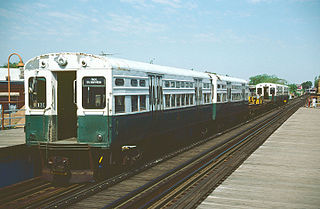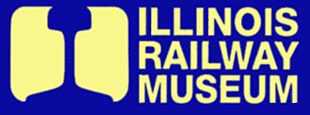| 2000 series | |
|---|---|
 CTA 2141 at Laramie Ave | |
| In service | 1964–1993 |
| Manufacturer | Pullman-Standard |
| Built at | Pullman-Standard Plant, Chicago, Illinois |
| Family name | High Performance |
| Constructed | 1964 |
| Entered service | 1964 |
| Scrapped | 1993 |
| Number built | 180 |
| Number preserved | 2 |
| Number scrapped | 176 |
| Formation | Married pair |
| Fleet numbers | 2001–2180 |
| Capacity | 47 (seated-A car) 51 (seated-B car) |
| Operator(s) | Chicago Transit Authority |
| Specifications | |
| Car body construction | Aluminum |
| Car length | 48 feet (14.63 m) |
| Width | 9 feet 4 inches (2.84 m) |
| Height | 12 feet (3.66 m) |
| Doors | 4 per car |
| Maximum speed | 55 miles per hour (89 km/h) |
| Weight | 47,400 pounds (21,500 kg) |
| Traction motors | 4 GE1250K1 per car |
| Power output | 100 horsepower (75 kW) each motor |
| Electric system(s) | 600 V DC third rail |
| Current collection method | Contact shoe |
| Track gauge | 4 ft 8 1⁄2 in (1,435 mm) standard gauge |
The 2000 series was a series of Chicago "L" car built in 1964 by Pullman-Standard of Chicago, Illinois. 180 cars were built.

The Chicago "L" is the rapid transit system serving the city of Chicago and some of its surrounding suburbs in the U.S. state of Illinois. Operated by the Chicago Transit Authority (CTA), it is the fourth-largest rapid transit system in the United States in terms of total route length, at 102.8 miles (165.4 km) long as of 2014, and the second-busiest rail mass transit system in the United States, after the New York City Subway. In 2016, the "L" had 1,492 rail cars, eight different routes, and 145 train stations; average weekday ridership was 759,866.

The Pullman Car Company, founded by George Pullman, manufactured railroad cars in the mid-to-late 19th century through the first half of the 20th century, during the boom of railroads in the United States. Through rapid late nineteenth century development of mass production, and takeover of rivals, the company developed a virtual monopoly on production and ownership of sleeper cars. At its peak in the early 20th century, its cars accommodated 26 million people a year, and it in effect operated "the largest hotel in the world". Its production workers initially lived in a planned worker community named Pullman, Chicago. Pullman developed the sleeping car, which carried his name into the 1980s. Pullman did not just manufacture the cars, it also operated them on most of the railroads in the United States, paying railroad companies to couple the cars to trains. The labor union associated with the company, the Brotherhood of Sleeping Car Porters, founded and organized by A. Philip Randolph, was one of the most powerful African-American political entities of the 20th century. The company also built thousands of streetcars and trolley buses for use in cities. Post World War II changes in automobile and airplane transport led to a steep decline in the company's fortunes. It folded in 1968.

Illinois is a state in the Midwestern and Great Lakes regions of the United States. It has the fifth largest gross domestic product (GDP), the sixth largest population, and the 25th largest land area of all U.S. states. Illinois has been noted as a microcosm of the entire United States. With Chicago in northeastern Illinois, small industrial cities and immense agricultural productivity in the north and center of the state, and natural resources such as coal, timber, and petroleum in the south, Illinois has a diverse economic base, and is a major transportation hub. Chicagoland, Chicago's metropolitan area, encompasses over 65% of the state's population. The Port of Chicago connects the state to international ports via two main routes: from the Great Lakes, via the Saint Lawrence Seaway, to the Atlantic Ocean and from the Great Lakes to the Mississippi River, via the Illinois Waterway to the Illinois River. The Mississippi River, the Ohio River, and the Wabash River form parts of the boundaries of Illinois. For decades, Chicago's O'Hare International Airport has been ranked as one of the world's busiest airports. Illinois has long had a reputation as a bellwether both in social and cultural terms and, through the 1980s, in politics.
The 2000 series was the first of five series of Chicago "L" cars known as the High-Performance Family. Delivered to the CTA in 1964, they were built as married-pair sets, like the PCC-based 6000 series cars before them. The 2000 series, along with the High-Performance Family in general, were meant as both as a supplement for the 6000 series cars (which were built from discontinued PCC streetcar components) and a replacement for the rapidly aging 4000 series cars dating from the early 20th century. The CTA also needed a train car that would meet more modern demands for train service, such as higher speeds and more comfortable interiors.

The 6000 series is a series of Chicago "L" car built between 1950 and 1959 by the St. Louis Car Company. 720 cars were built. The last of 6000-series cars were retired on December 4, 1992. These cars were in service for 42 years.

The PCC is a streetcar (tram) design that was first built in the United States in the 1930s. The design proved successful in its native country, and after World War II it was licensed for use elsewhere in the world where PCC based cars were made. The PCC car has proved to be a long-lasting icon of streetcar design, and many are still in service around the world.
The 2000-series' more modern control systems initially prevented them from being used in a train with other system types, until the delivery of the 2200-series and later cars in the High-Performance Family. These cars were the baselines of future CTA cars to come, equipped with a futuristic look and modern technology: they were also extremely reliable, averaging 50,000 miles a year on busy lines such as the Lake-Dan Ryan Line. The cars had a number of modern features for the time, including air conditioning, fluorescent lighting, large windows, and sculptured fiberglass front ends for the car bodies. The car bodies were mainly aluminum. The High-Performance Family of designs would last until 1994 when the 3200 series were built, however even 21st Century CTA cars, such as the 5000 series cars, are close relatives of the High Performance Design cars with improvements for technological advances.

The 5000 series is a series of Chicago "L" car built by Bombardier Transportation of Plattsburgh, New York. A $577 million order for 406 cars was placed in 2006. In July 2011, the CTA ordered 300 more cars for $331 million as an option on the first contract.
However, the 2000-series cars would have the shortest service life of all the High-Performance Family cars. Over the decades, the completely new advances presented in the 2000 series cars for the time presented maintenance problems in the future; the aluminum bodies rusted quickly in the Chicago winters, while snow caused motors to short out and brakes to become non-functional (especially after the 1979 blizzard). The 2200 series cars, originally meant as complements to the 2000 series cars, were much more durable on the L's busier lines, while the 2000 trains were moved to the older lines with less frequency. The 2200's construction, with a flat sided stainless steel body, under-car air conditioning units (as opposed to the 2000s interior units), and more capable Budd Pioneer motors all contributed to the much longer lifespan of the 2200 over the 2000; the final blow came when the Green Line was finally closed for renovations, as the 2000 series were not considered capable enough for Red or Blue line service.

The 2200 series was a series of Chicago "L" cars built in 1969 and 1970 by the Budd Company of Philadelphia, Pennsylvania. 150 cars were built. The last 8 2200-series cars were retired from service after their ceremonial last trips on the Blue Line on August 8, 2013. These cars were in service for 44 years. All cars except the preserved ones were scrapped by October 2015.
The last 2000-series cars were scrapped after their final service on the Green Line on December 17, 1993, ending with a total lifespan of 29 years. One pair of cars is preserved, 2153-2154 is preserved at the Illinois Railway Museum in Union, Illinois.

The Illinois Railway Museum is the largest railroad museum in the United States. It is located at 7000 Olson Road in Union, Illinois, 55 miles (89 km) northwest of Chicago.

Union is a village in McHenry County, Illinois, United States. The population was 580 at the 2010 census, up from 576 in 2000.











